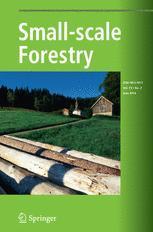Resource information
Research was conducted in Alutilla Valley in eastern Bangladesh to identify the nature of existing agroforestry systems and to identify potential agroforestry models that could ameliorate currently degrading forest resources Data were collected through farmer participatory research and a structured quarterly survey in two villages. Qualitative and supplementary quantitative analysis methods were used to assess the financial potential of agroforestry systems. Various patterns of agroforestry exist in the study site, but all have two common principles, namely integration with agriculture and multi-functionality. Two agroforestry models suitable for adoption by farmers have been identified. Multi-strata agroforestry, based on a fruit and timber tree canopy with vegetables and tuber species in the understorey, can be practiced in the shifting cultivation fields near settlements. Fruit and timber tree-based conservation agroforestry is well suited to manage large-scale biologically depleted landscapes. Both systems yield early financial returns, facilitating the change from shifting cultivation to multi-strata agroforestry or fruit and tree-based conservation agroforestry.


